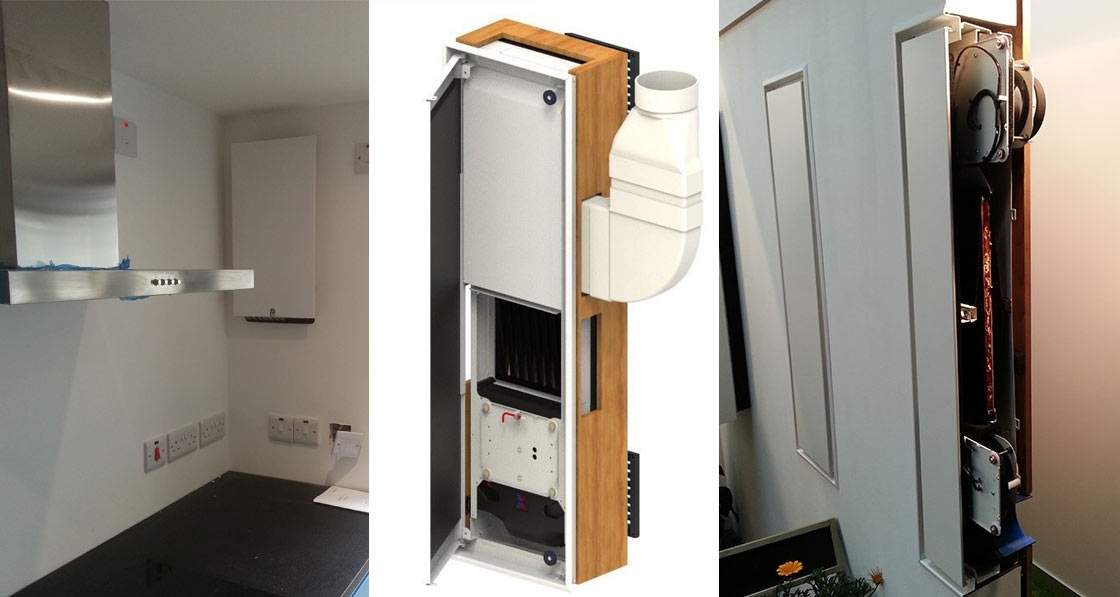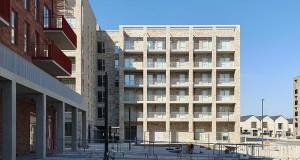
- Ventilation
- Posted
Consider decentralised MVHR for passive retrofits & small dwellings — Sustainable Homes Scotland
Leading low energy ventilation supplier Sustainable Homes Scotland has advised anyone carrying out a deep retrofit — or building a small low energy dwelling — to consider the benefits of a new generation of decentralised mechanical ventilation with heat recovery (MVHR) systems.
This article was originally published in issue 19 of Passive House Plus magazine. Want immediate access to all back issues and exclusive extra content? Click here to subscribe for as little as €10, or click here to receive the next issue free of charge
“Ventilation is critical for airtight buildings – we all know that. We also have heard from leading lights of indoor air quality research, such as Dr Sterling Howieson, that the risk of black mould increases three times when dwellings are being insulated and made more airtight,” said Stefan Huber of Sustainable Homes Scotland.
“The difficult question is, how to implement energy efficient ventilation systems in smaller dwellings and properties that are being upgraded, such as to the Enerphit standard. In such dwellings, whole house MVHR is often quite difficult to fit in, due to the size of the equipment and due to the amount of ductwork.”
Huber said that in recent years, a few companies have dedicated themselves to developing decentralised MVHR systems, which work continuously and on higher ventilation levels (up to 100-120 m3/h), compared to smaller oscillating decentralised units.
Decentralised units are placed into an external wall, such as of a living room. Wet rooms are then connected to this unit via an extract duct system, creating an air flow path through the dwelling. Bedrooms and other habitable rooms tap into the airflow through active transfer units, located within the internal bedroom walls. As stale air is expelled out of these rooms, fresh air is drawn in through door undercuts or other internal air transfer openings.
The ventilation rate is fully demand controlled according to CO2, humidity and temperature.
The active transfer units in the bedrooms are independent, but also fully demand controlled.
This setup comes with a number of advantages compared to the traditional whole house approach, Huber said. The ventilation adjusts to the use of the dwelling, ensuring that CO2 and humidity levels do not exceed recommended levels. The system minimises the need for user interference, and also counteracts the risk over-dehumidification, which can sometimes be an issue with conventional MVHR systems.
Such decentralised systems follow the usage cycle between living spaces and bedrooms. Due to their demand controlled operation, they use a fraction of the energy used by a standard MVHR system. The need for ducting is minimal, as only extract ductwork is needed. Advanced control technology allows monitoring of all air quality parameters, if so desired.
“Unfortunately there are some limitations with these systems as well, as each of these units can serve only about 70 square metres of space and one storey at a time,” Huber said. “For two-storey buildings, at least two of these MVHR units have to be implemented. There is still a cost advantage for conventional MVHR systems for larger dwellings, until the price for these decentral systems comes down, as they become more widely used.”
“Personally I believe that this innovative approach to whole house ventilation will shape the future of the domestic ventilation industry, as it combines the advantages of heat recovery with those of demand controlled extract systems. Some of these MVHR units have now been passive house certified, making them a viable option for passive buildings.”






